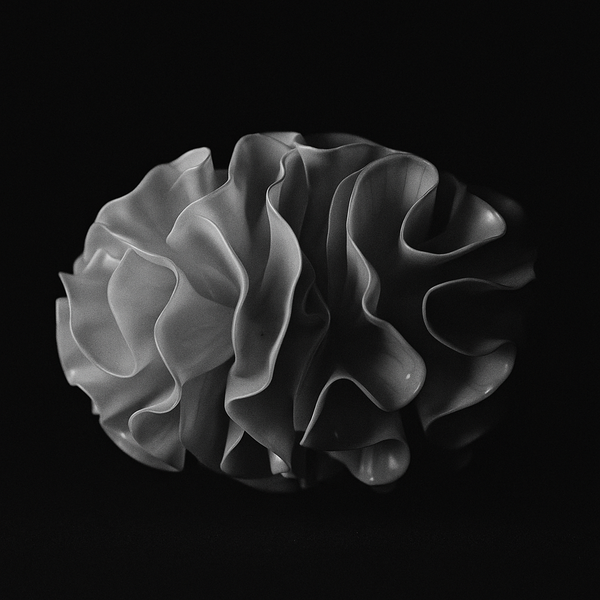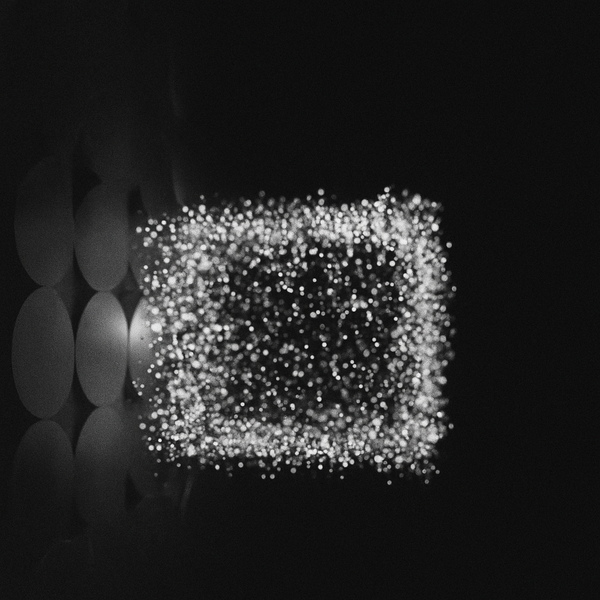Cosmic Echoes: When Science Fiction Becomes Reality

A recent United Airlines flight over Utah experienced something extraordinary—an unknown object (possibly a fragment of space debris or a meteor) struck the aircraft’s windscreen during flight. While passengers remained safe, the incident marked a significant moment by turning space debris from a theoretical concern into an immediate aviation hazard. The object's identity remains unknown, with investigators still baffled by the mystery fragment that had traveled through the cosmic dark before intersecting with human commerce.
This collision represents more than an isolated incident—it's a preview of our orbital future, where the detritus of past ambitions constrains tomorrow's possibilities.
The Architecture of Orbital Decay
Space debris operates by rules that would make any systems designer weep. Unlike terrestrial pollution, which gravity eventually claims, orbital debris follows Kessler Syndrome dynamics—a cascade effect where each collision generates exponentially more fragments. Current tracking systems monitor over 1.2 million debris fragments larger than 1 centimeter, with more than 50,000 objects exceeding 10 centimeters dancing around Earth.
The mathematics are unforgiving. At orbital velocities, even small fragments carry tremendous kinetic energy. A defunct satellite becomes a shotgun blast frozen in time, waiting for the right gravitational nudge to unleash chaos across multiple orbital planes.
Consider the elegant irony: our species' greatest technological achievement—spaceflight—now threatens to imprison us within our own discarded dreams. Each failed mission, each exploded upper stage, each anti-satellite weapons test adds another layer to an invisible shell of hazardous metal encasing our planet.
Parallels in Terrestrial Infrastructure
The space debris crisis mirrors challenges plaguing earthbound systems, particularly our electrical grid. Both represent critical infrastructure designed decades ago for simpler times, now buckling under exponential demand and cascading failure modes.
Like orbital debris, power grid vulnerabilities compound geometrically. A single transformer failure can trigger rolling blackouts across multiple states. Both systems suffer from the same fundamental design flaw: they evolved organically without comprehensive systems thinking.
The electrical grid grew through piecemeal additions, utility by utility, creating interdependencies that no single entity fully comprehends. Similarly, space launches proceeded nation by nation, agency by agency, with minimal coordination on orbital traffic management or end-of-life protocols.
The Constraint-Driven Solution Space
Addressing orbital debris requires embracing constraints as creative catalysts rather than engineering obstacles. The most promising solutions emerge from this tension between limitation and innovation.
Active debris removal represents one approach—spacecraft designed specifically to capture and deorbit defunct satellites. Success would prove the concept; failure might create even more debris.
More elegant solutions focus on prevention through design. Self-deorbiting satellites incorporate drag sails or propulsion systems ensuring they burn up in Earth's atmosphere after mission completion. Some proposals suggest orbital recycling stations where defunct satellites become raw materials for new construction, transforming waste into resource.
The most intriguing approaches borrow from biological systems. Orbital debris behaves like an immune response gone wrong—protective mechanisms becoming pathological. Nature offers templates: consider how forest ecosystems manage decay, transforming fallen trees into nutrients for new growth rather than permanent obstacles.
Ethical Frameworks for Cosmic Responsibility
The Utah incident forces uncomfortable questions about intergenerational responsibility. Who bears liability when decades-old debris threatens modern commercial aviation? How do we assign accountability across decades, political systems, and technological paradigms?
We need new ethical models that account for delayed consequences and distributed responsibility. Perhaps drawing inspiration from environmental law, where polluter-pays principles create incentives for sustainable practices. Space agencies could contribute to orbital cleanup funds proportional to their debris generation, creating economic pressure for responsible design.
The alternative is a tragedy of the orbital commons, where individual rational decisions—launching satellites, conducting weapons tests, ignoring end-of-life protocols—collectively destroy the shared resource that enables space exploration.
Composing Tomorrow's Orbital Symphony
The path forward requires orchestrating multiple instruments: technology, policy, economics, and ethics. Like a complex musical composition, success depends not on any single element but on their harmonic interaction.
Technical solutions must embrace graceful degradation—systems that fail safely rather than catastrophically. Policy frameworks need updating for an era where space activities affect terrestrial commerce. Economic models should internalize long-term costs rather than externalizing them to future generations.
Most critically, we need cultural shifts in how we conceptualize space. The frontier mythology that drove early space exploration—with its emphasis on conquest and expansion—poorly serves an era requiring stewardship and sustainability.
The Utah incident offers a preview of our choices: continue treating space as an infinite dumping ground, or recognize it as a shared commons requiring careful tending. The fragments circling overhead aren't just debris—they're the fossilized remains of dreams that forgot to plan for their own endings.
Our next chapter in space exploration will be written not by what we launch, but by what we choose to bring back down. In that choice lies the difference between cosmic poetry and orbital cacophony, between expanding human presence among the stars and imprisoning ourselves within a shell of our own making.
References
- https://www.wired.com/story/mystery-space-object-strikes-united-airlines-flight-over-utah
- https://www.cbsnews.com/news/space-junk-risk-impacting-planes-researchers
- https://www.livescience.com/space/its-time-to-clean-up-space-junk-before-orbits-become-unusable-according-to-new-esa-report
- https://www.space.com/space-exploration/launches-spacecraft/falling-space-debris-is-a-growing-worry-for-aircraft-new-research-suggests
- https://arstechnica.com/space/2025/10/something-from-space-may-have-just-struck-a-united-airlines-flight-over-utah
- https://beyond.ubc.ca/airplanes-face-a-growing-risk-of-being-hit-by-uncontrolled-re-entries-of-rockets-used-to-launch-satellites
- https://www.unmannedairspace.info/latest-news-and-information/outer-space-institute-recommends-measures-to-reduce-risks-posed-by-reentry-of-space-debris
- https://aerospaceamerica.aiaa.org/features/dodging-debris
- https://www.aviation24.be/airlines/united-airlines/possible-space-object-strikes-united-airlines-jet-over-utah
- https://thedebrief.org/the-aircraft-has-collided-with-an-object-investigators-still-baffled-by-mystery-object-that-struck-plane-caused-minor-injuries
- https://cleantechnica.com/2025/10/19/the-dutch-grid-in-2050-conclusions-craziness
Models used: gpt-4.1, claude-sonnet-4-20250514, gpt-image-1




